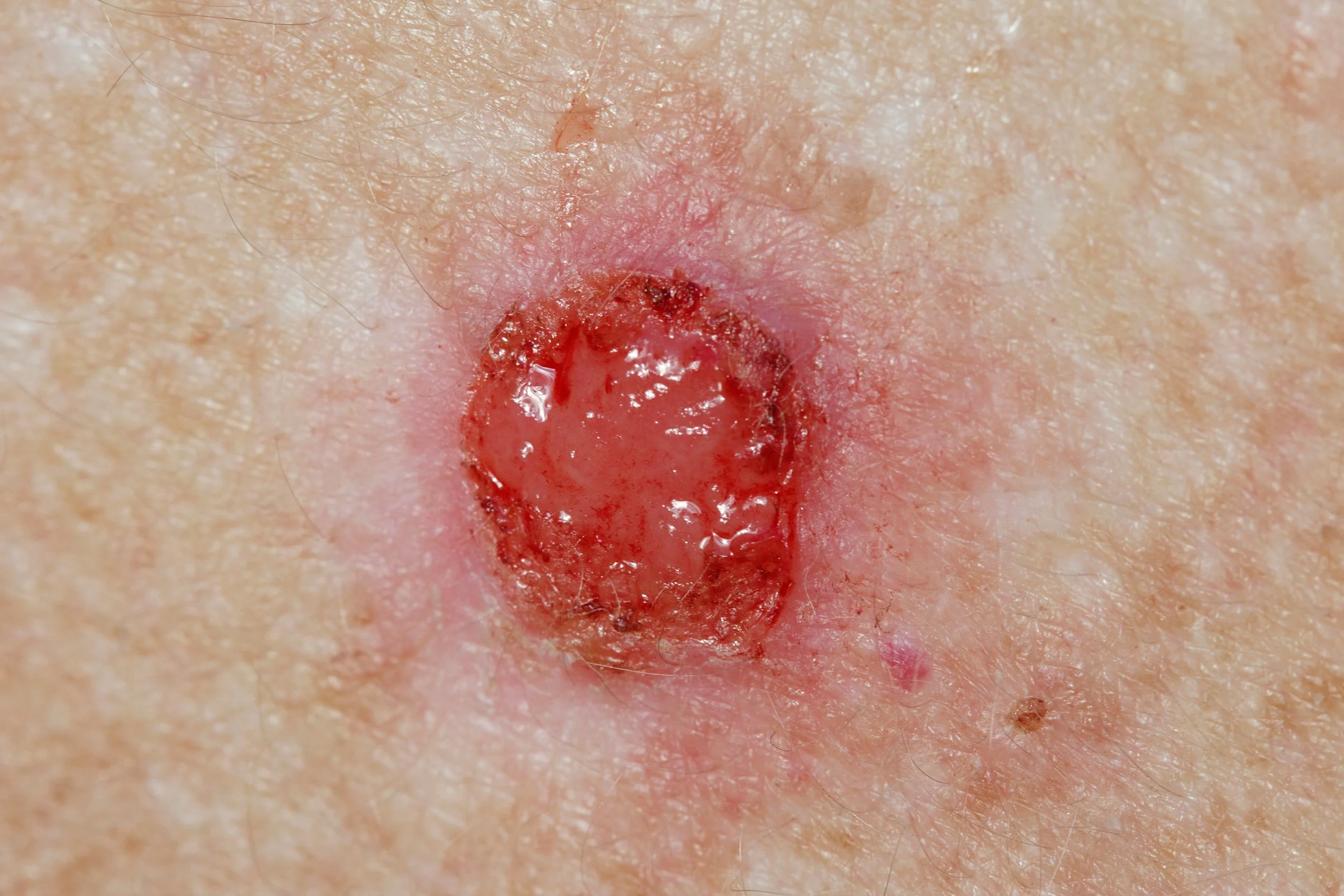Basal Cell Carcinoma
BASAL CELL CARCINOMA
Basal cell carcinoma (BCC) is the most common type of skin cancer. It originates in the basal cells, which are found in the deepest layer of the epidermis, the outermost layer of the skin. BCC typically develops in areas that are frequently exposed to the sun, such as the face, neck, and hands. It grows slowly and rarely spreads to other parts of the body, but early detection and treatment are important to prevent further damage.

SYMPTOMS
Open sore or ulceration: BCC can manifest as a persistent sore or ulceration that does not heal within a few weeks or months. The sore may ooze, crust over, or bleed intermittently.
Reddish or pinkish patch: BCC can appear as a reddish or pinkish patch of skin that may be slightly raised, smooth, or scaly.
Pearly or translucent bump: BCC often presents as a pearly or translucent bump with a rolled edge. The bump may have small blood vessels visible on the surface.
Shiny or waxy appearance: BCC can have a shiny or waxy appearance, resembling a small pearl or a flesh-colored bump.
Scar-like indentation: In some cases, BCC may cause a scar-like indentation in the skin, known as morpheaform or sclerosing BCC.
TREATMENT
Your provider will plan a customized treatment plan for you, depending on the size, location, and specific characteristics of the tumor. The primary goal of treatment is to remove or destroy the cancerous cells while preserving the surrounding healthy tissue.
Common treatment approaches include:
Surgical excision: This involves cutting out the tumor and a small margin of healthy skin around it. It is a highly effective treatment for most BCCs and typically results in complete removal.
Mohs surgery: Mohs micrographic surgery is a specialized surgical technique that allows for the precise removal of the tumor layer by layer, with real-time microscopic examination. It is especially useful for BCCs with complex or ill-defined borders or in areas where tissue preservation is crucial.
Curettage and electrodesiccation: This procedure involves scraping the tumor with a curette (a spoon-shaped instrument) and then cauterizing the area with an electric current to destroy any remaining cancer cells, Radiation therapy: In certain cases, radiation therapy may be used, particularly for large, aggressive, or recurrent BCCs, or when surgical intervention is not feasible.
Topical treatments: For superficial BCCs or those in specific areas, topical medications such as imiquimod or fluorouracil (5-FU) cream may be prescribed to induce a local immune response or promote cancer cell death.